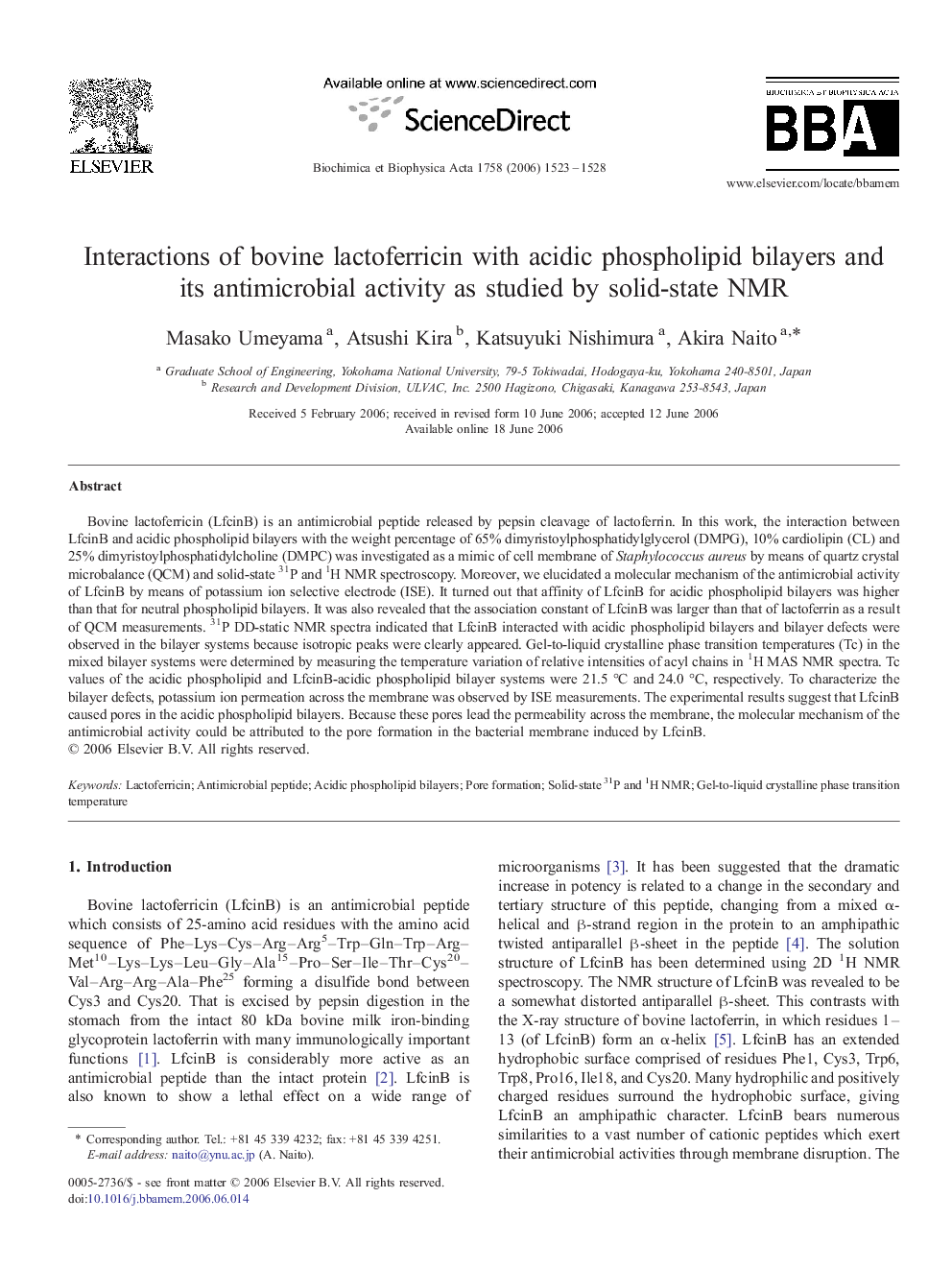| کد مقاله | کد نشریه | سال انتشار | مقاله انگلیسی | نسخه تمام متن |
|---|---|---|---|---|
| 1946039 | 1053284 | 2006 | 6 صفحه PDF | دانلود رایگان |

Bovine lactoferricin (LfcinB) is an antimicrobial peptide released by pepsin cleavage of lactoferrin. In this work, the interaction between LfcinB and acidic phospholipid bilayers with the weight percentage of 65% dimyristoylphosphatidylglycerol (DMPG), 10% cardiolipin (CL) and 25% dimyristoylphosphatidylcholine (DMPC) was investigated as a mimic of cell membrane of Staphylococcus aureus by means of quartz crystal microbalance (QCM) and solid-state 31P and 1H NMR spectroscopy. Moreover, we elucidated a molecular mechanism of the antimicrobial activity of LfcinB by means of potassium ion selective electrode (ISE). It turned out that affinity of LfcinB for acidic phospholipid bilayers was higher than that for neutral phospholipid bilayers. It was also revealed that the association constant of LfcinB was larger than that of lactoferrin as a result of QCM measurements. 31P DD-static NMR spectra indicated that LfcinB interacted with acidic phospholipid bilayers and bilayer defects were observed in the bilayer systems because isotropic peaks were clearly appeared. Gel-to-liquid crystalline phase transition temperatures (Tc) in the mixed bilayer systems were determined by measuring the temperature variation of relative intensities of acyl chains in 1H MAS NMR spectra. Tc values of the acidic phospholipid and LfcinB-acidic phospholipid bilayer systems were 21.5 °C and 24.0 °C, respectively. To characterize the bilayer defects, potassium ion permeation across the membrane was observed by ISE measurements. The experimental results suggest that LfcinB caused pores in the acidic phospholipid bilayers. Because these pores lead the permeability across the membrane, the molecular mechanism of the antimicrobial activity could be attributed to the pore formation in the bacterial membrane induced by LfcinB.
Journal: Biochimica et Biophysica Acta (BBA) - Biomembranes - Volume 1758, Issue 9, September 2006, Pages 1523–1528